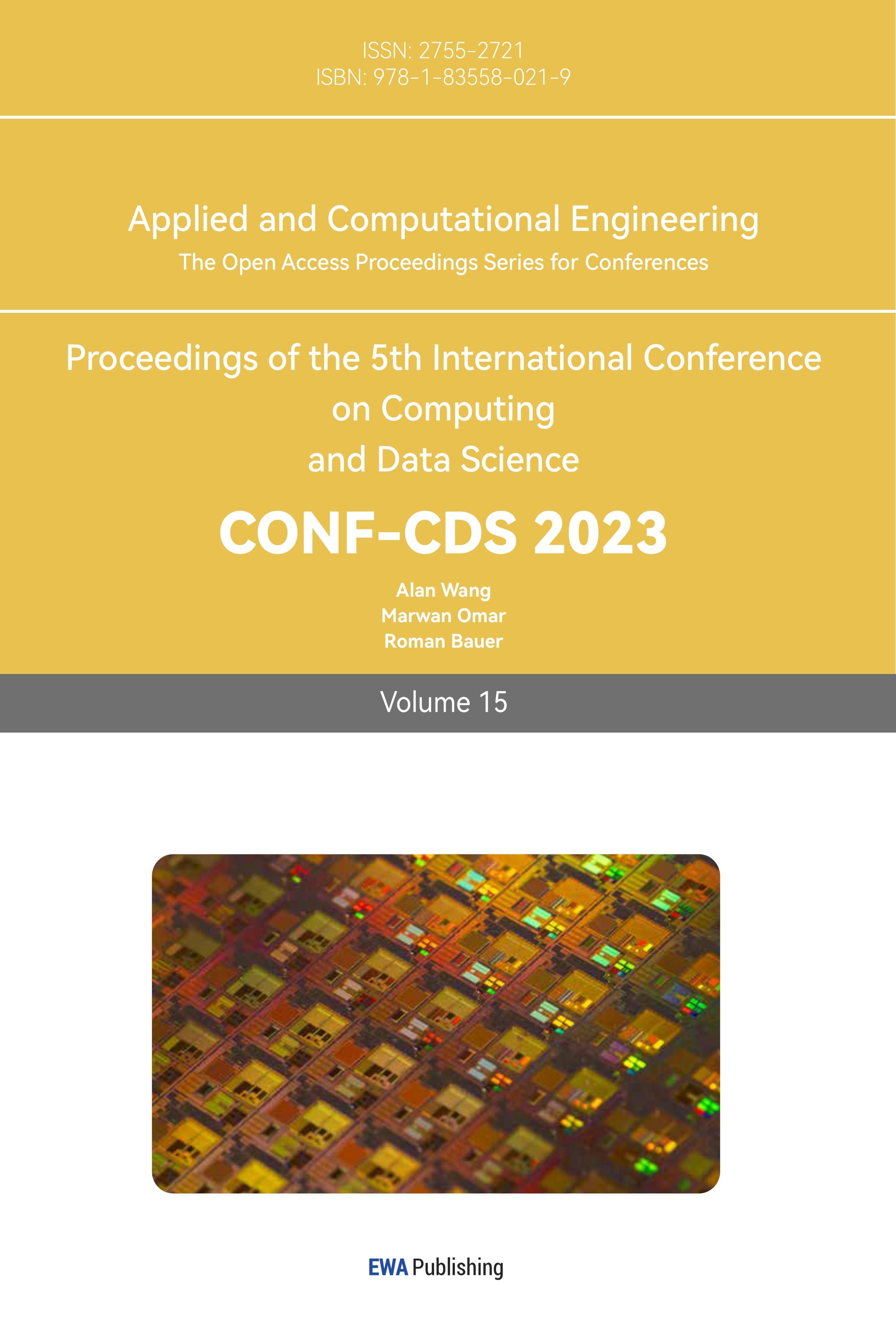References
[1]. Jagnade, G., Ikar, M., Chaudhari, N., & Chaware, M. Hand Gesture-based Virtual Mouse using Open CV. 2023 International Conference on Intelligent Data Communication Technologies and Internet of Things 820-825.
[2]. Gavale, S., & Jadhav, Y. Hand Gesture Detection Using Arduino and Python for Screen Control. 2020 International Journal of Engineering Applied Sciences and Technology, 5, 271-276.
[3]. Oudah, M., Al-Naji, A., & Chahl, J. Hand gesture recognition based on computer vision: a review of techniques. 2020 Journal of Imaging, 6(8), 73.
[4]. AlSaedi, A. K. H., & AlAsadi, A. H. H. A new hand gestures recognition system. Indonesian Journal of Electrical Engineering and Computer Science, 18(1), 49-55.
[5]. Guo, L., Lu, Z., & Yao, L. Human-machine interaction sensing technology based on hand gesture recognition: A review. 2020, IEEE Transactions on Human-Machine Systems, 51(4), 300-309.
[6]. Mujahid, A., Awan, M. J., Yasin, A., Mohammed, M. A., Damaševičius, R., Maskeliūnas, R., & Abdulkareem, K. H. Real-time hand gesture recognition based on deep learning YOLOv3 model. 2021 Applied Sciences, 11(9), 4164.
[7]. Thuan, D. Evolution of Yolo algorithm and Yolov5: The State-of-the-Art object detention algorithm. 2021Journal of Electrical Engineering and Computer Science,1-10.
[8]. Doherty, J., Gardiner, B., Kerr, E., Siddique, N., & Manvi, S. S. Comparative Study of Activation Functions and Their Impact on the YOLOv5 Object Detection Model. 2022, Pattern
[9]. Sweigart, A. PyAutoGUI documentation. Read the Docs, 25.
[10]. Kapitanov, A., Makhlyarchuk, A., & Kvanchiani, K. HaGRID-HAnd Gesture Recognition Image Dataset.2022 arXiv preprint arXiv:2206.08219.
[11]. Ultralytics. YOLOv5 (Version 7.0). https://github.com/ultralytics/yolov5
[12]. Sozzi, M., Cantalamessa, S., Cogato, A., Kayad, A., & Marinello, F. Automatic bunch detection in white grape varieties using YOLOv3, YOLOv4, and YOLOv5 deep learning algorithms. 2022 Agronomy, 12(2), 319.
[13]. Liu, K., Tang, H., He, S., Yu, Q., Xiong, Y., & Wang, N. Performance validation of YOLO variants for object detection. 2021 International Conference on bioinformatics and intelligent computing 239-243.
Cite this article
Tang,J. (2023). Using end-to-end learning and PyAutoGUI to apply gesture recognition for human-computer interaction. Applied and Computational Engineering,15,141-148.
Data availability
The datasets used and/or analyzed during the current study will be available from the authors upon reasonable request.
Disclaimer/Publisher's Note
The statements, opinions and data contained in all publications are solely those of the individual author(s) and contributor(s) and not of EWA Publishing and/or the editor(s). EWA Publishing and/or the editor(s) disclaim responsibility for any injury to people or property resulting from any ideas, methods, instructions or products referred to in the content.
About volume
Volume title: Proceedings of the 5th International Conference on Computing and Data Science
© 2024 by the author(s). Licensee EWA Publishing, Oxford, UK. This article is an open access article distributed under the terms and
conditions of the Creative Commons Attribution (CC BY) license. Authors who
publish this series agree to the following terms:
1. Authors retain copyright and grant the series right of first publication with the work simultaneously licensed under a Creative Commons
Attribution License that allows others to share the work with an acknowledgment of the work's authorship and initial publication in this
series.
2. Authors are able to enter into separate, additional contractual arrangements for the non-exclusive distribution of the series's published
version of the work (e.g., post it to an institutional repository or publish it in a book), with an acknowledgment of its initial
publication in this series.
3. Authors are permitted and encouraged to post their work online (e.g., in institutional repositories or on their website) prior to and
during the submission process, as it can lead to productive exchanges, as well as earlier and greater citation of published work (See
Open access policy for details).
References
[1]. Jagnade, G., Ikar, M., Chaudhari, N., & Chaware, M. Hand Gesture-based Virtual Mouse using Open CV. 2023 International Conference on Intelligent Data Communication Technologies and Internet of Things 820-825.
[2]. Gavale, S., & Jadhav, Y. Hand Gesture Detection Using Arduino and Python for Screen Control. 2020 International Journal of Engineering Applied Sciences and Technology, 5, 271-276.
[3]. Oudah, M., Al-Naji, A., & Chahl, J. Hand gesture recognition based on computer vision: a review of techniques. 2020 Journal of Imaging, 6(8), 73.
[4]. AlSaedi, A. K. H., & AlAsadi, A. H. H. A new hand gestures recognition system. Indonesian Journal of Electrical Engineering and Computer Science, 18(1), 49-55.
[5]. Guo, L., Lu, Z., & Yao, L. Human-machine interaction sensing technology based on hand gesture recognition: A review. 2020, IEEE Transactions on Human-Machine Systems, 51(4), 300-309.
[6]. Mujahid, A., Awan, M. J., Yasin, A., Mohammed, M. A., Damaševičius, R., Maskeliūnas, R., & Abdulkareem, K. H. Real-time hand gesture recognition based on deep learning YOLOv3 model. 2021 Applied Sciences, 11(9), 4164.
[7]. Thuan, D. Evolution of Yolo algorithm and Yolov5: The State-of-the-Art object detention algorithm. 2021Journal of Electrical Engineering and Computer Science,1-10.
[8]. Doherty, J., Gardiner, B., Kerr, E., Siddique, N., & Manvi, S. S. Comparative Study of Activation Functions and Their Impact on the YOLOv5 Object Detection Model. 2022, Pattern
[9]. Sweigart, A. PyAutoGUI documentation. Read the Docs, 25.
[10]. Kapitanov, A., Makhlyarchuk, A., & Kvanchiani, K. HaGRID-HAnd Gesture Recognition Image Dataset.2022 arXiv preprint arXiv:2206.08219.
[11]. Ultralytics. YOLOv5 (Version 7.0). https://github.com/ultralytics/yolov5
[12]. Sozzi, M., Cantalamessa, S., Cogato, A., Kayad, A., & Marinello, F. Automatic bunch detection in white grape varieties using YOLOv3, YOLOv4, and YOLOv5 deep learning algorithms. 2022 Agronomy, 12(2), 319.
[13]. Liu, K., Tang, H., He, S., Yu, Q., Xiong, Y., & Wang, N. Performance validation of YOLO variants for object detection. 2021 International Conference on bioinformatics and intelligent computing 239-243.









